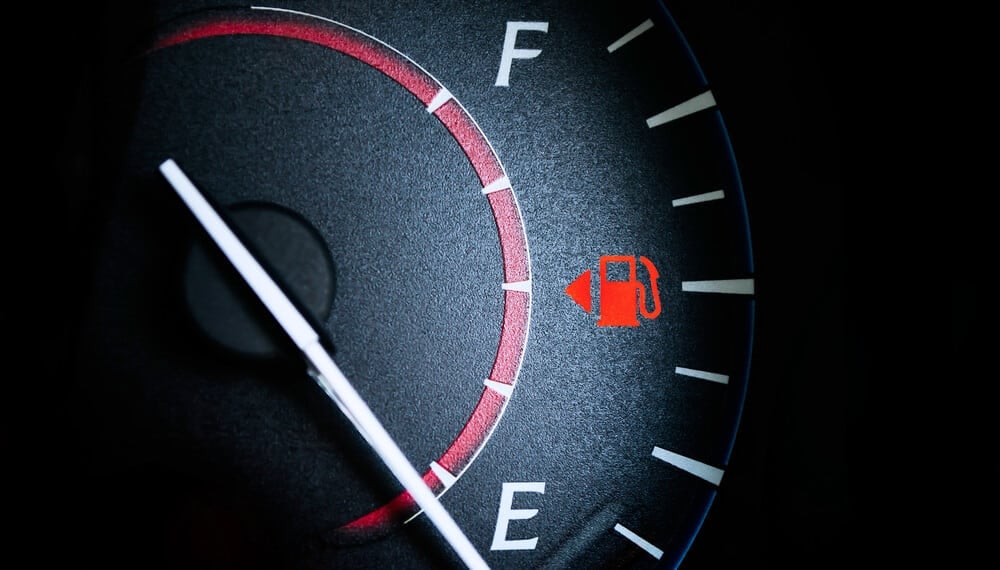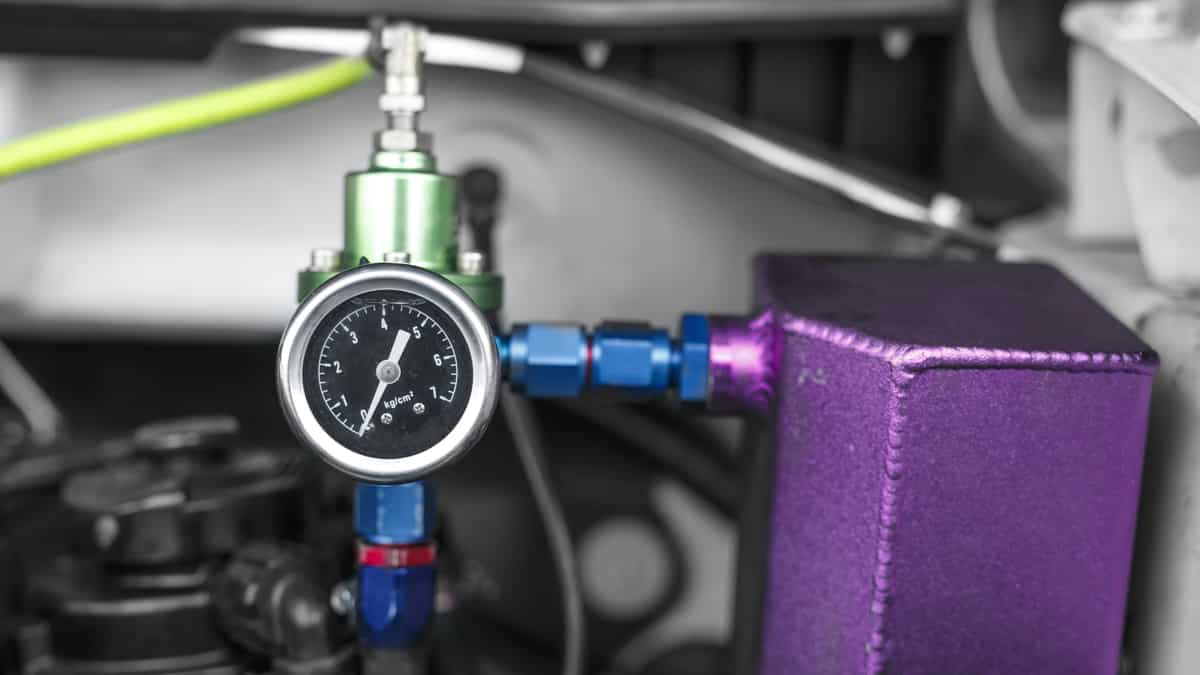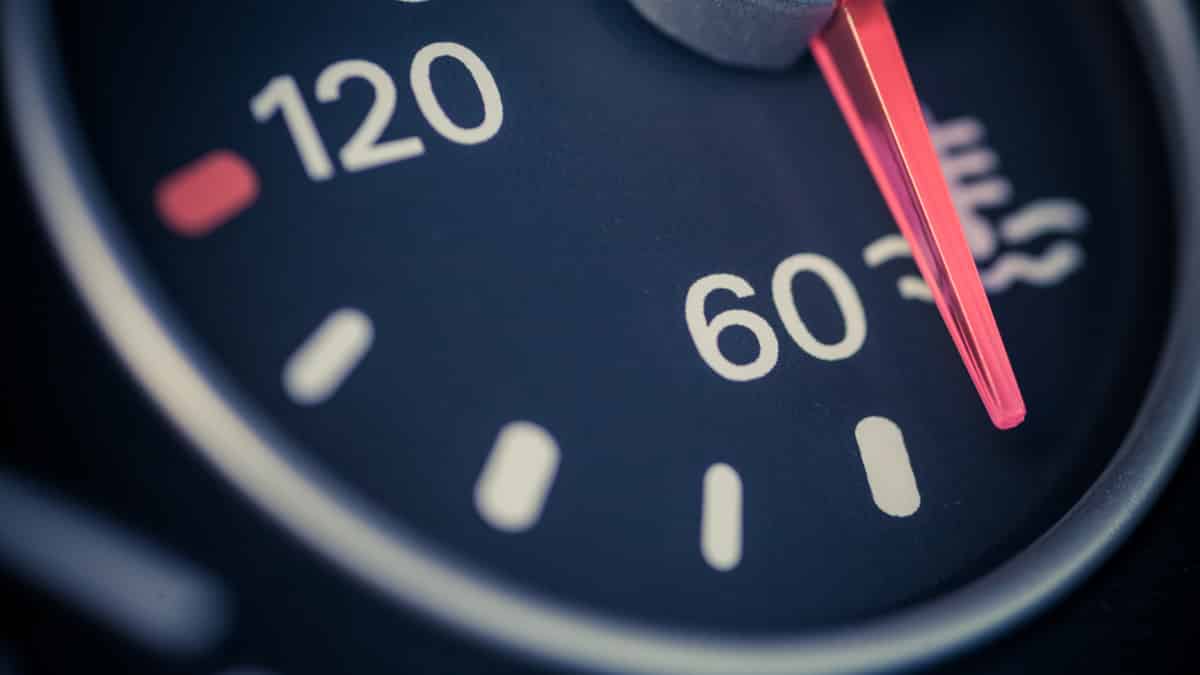The fuel gauge sender is responsible for relaying how much gas is in the car. If you have a bad fuel gauge sender, there’s going to be trouble reading the gas level. That’s why it’s important to pay attention to the symptoms of a bad fuel gauge sender, so it can be replaced at the first sign of failure.
In this guide, we cover the purpose and location of the fuel gauge sender, along with the symptoms that something is wrong. We also show you how to test and replace the fuel gauge sender before answering some of your top questions.
Symptoms Of A Bad Fuel Gauge Sender
When the fuel gauge sender goes bad, the gauge begins to operate erratically. The gauge can also get stuck on empty or remain on full, even when that’s not how much gas is in the tank. Finally, you could notice other incorrect readings, making it hard to determine how much fuel is in the system.
Let’s look at these symptoms closer.
1. Erratic Gauge Behavior

The most common symptom is an erratic gauge. With a malfunctioning sender, the gauge behaves strangely, making it difficult for you to figure out what’s going on. It may quickly change its position or give you an inaccurate reading, which we touch on more in a minute.
As an example, you may look down one minute and see half of a tank, while the next minute, it looks full. With this problem, you aren’t going to know when it’s time to fill up the gas tank, putting you at risk of running out of fuel.
2. Gauge Stuck on Empty

If you see your gauge on empty but know that you’ve recently filled up, you know that can’t be right unless there’s a leak. This problem causes a lot of alarm, but the problem may just be a defective fuel gauge sender.
This problem often occurs when the float is defective or when it gets separated. It can also occur when a resistor is faulty, leading to an empty reading.
3. Gauge Stuck on Full
Less commonly, the gauge can read full when the sender is defective. This normally happens when the resistor sends a bad signal to the cluster, leading to a faulty reading.
To deal with this, you would need to know how much fuel is actually in the tank. You may need to track the mileage after every fill-up until you fix the issue.
4. Incorrect Fuel Gauge Readings
The faulty readings don’t need to be either empty or full. The gauge can get stuck anywhere when there’s a fault.
It’s unusual for the gauge to get stuck at an irregular location, but not impossible. However, this problem can also be caused by a defective fuel gauge, so you want to complete a full diagnosis before making any judgments.
What’s The Function Of A Fuel Gauge Sender?

The fuel gauge sender is responsible for sending the signal about the tank level to the fuel gauge. It goes by many different names, including the float gauge, fuel sending unit and the fuel level sending unit.
The fuel sending unit is made of three parts. The float is the part that is made from buoyant materials, so it doesn’t dissolve in the fuel. It’s connected to a metal rod that connects to the variable resistor. The metal rod moves with the float, depending on how much fuel is in the tank.
This float sits on top of the fuel in the tank, with the metal rod moving around based on how much is in the system. Based on the position of the rod, the variable resistor reads its level and sends a signal to the vehicle to decipher the amount of fuel left in the system. This reading is displayed by the fuel gauge on the instrument cluster, so you know when to get fuel.
Where Is The Fuel Gauge Sender Located?
The fuel sending unit is within your car’s fuel tank. It’s attached to the fuel pump, with a metal rod connecting it to the variable resistor.
To find the sender, look for the base with the float and rod on it. The float will be lightweight and hollow, so it rests on top of the fuel.
How Do You Test A Fuel Gauge Sender?
There are several methods for testing a fuel gauge sender. Let’s work through each step individually.
Scan Trouble Codes
If the Check Engine Light is illuminated on your dash, you can get a better understanding of what is wrong by reading the OBD-II trouble codes.
Plug in your compatible scanner to see what’s going on. You can reference the information with our online trouble code library and it may indicate where your problem is. Here are just a few of the codes you may see.
- Fuel Level Sensor Circuit Malfunction (P0460)
- Fuel Level Sensor Circuit Range/Performance (P0461)
- Fuel Level Sensor Circuit Low Input (P0462)
- Fuel Level Sensor Circuit High Input (P0463)
- Fuel Level Sensor Circuit Intermittent (P0464)
These codes indicate an electrical fault, so it could just be a faulty connection or ground. These codes can also come on if you refuel the vehicle with the engine running, as it causes a rapid change in the levels.
Inspect the Fuel Gauge Fuses
If the gauge isn’t working at all, it’s easiest to start by checking the fuses. When a fuse blows, it can cause the instrument cluster to stop operating.
It’s simple to change a car fuse if it is blown. Just make sure you get one that’s rated for the same amperage as the one you are replacing.
Run a Self-Test
Today’s cars are set up to run a lot of self-tests. The manufacturer may have a procedure for running a self-test on the electronic fuel gauges. Reference a service manual to see how to do this.
Initiate a self-test that runs through the instrument panel display and gauges. If the fuel gauge doesn’t go from full to empty during the run, there’s probably an issue with the gauge instead of the sending unit.
Use a Multimeter
If there’s a bad connection coming out of the signal wire to the fuel sending unit, or the ground wire isn’t good, you may get an inaccurate reading. With the service manual, follow the steps to remove the instrument cluster from the dash. If the fuel gauge wire looks good, read its voltage with your multimeter set at 20V DC. This gauge should receive 12 volts of power. If it doesn’t, follow the wires to see if there is any damage or corrosion.
Test the fuel sending unit at the fuel tank. Look for any signs of corrosion or damage, and ensure it is seated properly in the tank. If the unit is contaminated, you can clean the connectors to improve the connectivity. To check the voltage, set your multimeter to 20V DC. Reference the reading with your service manual to ensure it’s correct.
Check Ohms
If all of the other checks are good, you can move on to the Ohms of the fuel sending unit. You need to pull the unit out of the tank, so the float arm can be manipulated easily. Get the procedure from your service manual to check the Ohms or resistance.
If the Ohms read correctly, but the gauge isn’t showing the right level, there is a wiring issue between the two. If the Ohms aren’t correct, you need to replace the fuel gauge sender.
Replace Fuel Sending Unit
If you choose to replace the fuel sending unit, here are some simple steps to follow.
Read the procedure in the service manual. These instructions are generic and should never override what the manual tells you to do.
- Release the tank pressure.
- Disconnect the electrical connections and fuel lines to the sending unit.
- Clean around the plug, so no contaminants can get in the tank.
- Remove the retaining ring.
- Pull out the fuel sending unit with the O-ring or gasket.
- Compare this unit with the new one to ensure it is a direct replacement.
- Place the new unit in its place with a brand-new O-ring or gasket.
- Align the gasket securely between the tank and the fuel sending unit.
- Reconnect all of the wiring.
- Snap the fuel lines in place.
- Check for leaks.
If you plan to do this work alone, keep a fire extinguisher close by. Don’t work near anything that creates a spark and make sure you wear protective gear. If working on the fuel system worries you, it may be best to hire a professional mechanic. As professionals ourselves, we know how difficult this job can be on some vehicles.
How Much Does It Cost To Replace A Fuel Gauge Sender?
Replacing the fuel gauge sender costs $800 to $1,200, on average. The new fuel sending unit may only cost $125 to $250, but the labor makes up the majority of the cost because the replacement takes time. If you can perform the job yourself, you will save a lot of money.
It’s not that the replacement is overly difficult if you have the right tools. It just takes time, so you want to allot a day to complete the job yourself.
Will any fuel gauge work with any sending unit?
No, sending units aren’t calibrated equally. Many aftermarket gauge sensors aren’t going to work with OEM fuel gauges. For this reason, you want to ensure that your parts are meant to work together before you go through the trouble of replacing the sending unit.
Will a car run with a bad fuel sending unit?
Having a bad fuel sending unit won’t stop you from driving. The car continues to run as long as there is fuel in the tank. The difficult part is knowing how much fuel you have during this malfunction. If you keep track of the fuel in the tank manually, you may be able to drive for a short time without running out of gas.
How do I reset my fuel sending unit?
Follow the procedures in the service manual. It may tell you to turn on the ignition and press the trip or odometer button. Turn off the ignition and hold down the trip button for two seconds. Release it and press it again, repeating this process three or four times. Finally, hold it down until the information displays on the odometer.
What causes a fuel sender to fail?
The fuel gauge sender is meant to last the lifetime of the vehicle. However, bad or contaminated fuel can ruin the sensor, which is why it’s so important to choose top-tier fuel. Using low-quality additives can also cause the problem, creating premature failure of the sending unit.
Will disconnecting the battery reset the fuel gauge?
You may be able to reset the fuel gauge by disconnecting the battery for a short time. However, when the battery is disconnected, you have other issues to deal with. The radio presets, seat memory and other functions will also be reset.
While the fuel gauge sender is meant to last for the lifetime of the vehicle, it can fail, leaving you with many problems. By not knowing how much gas is in the car’s tank, you may find yourself sitting on the side of the road with an empty tank.
Avoid this problem by replacing the sending unit at the first sign of trouble. Visit a professional mechanic if you aren’t sure how to replace it.
Categories: Engine













